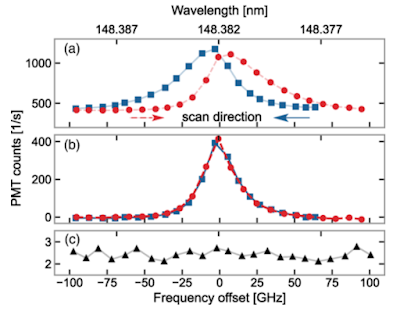A group in Germany has just published a paper showing a huge improvement in accuracy in measuring the energy and lifetime of the lowest-lying nuclear excited state that we know about - the 8.4 eV isomeric in Th-229. While typical nuclear excitation energies are around one million electron-volts (1 MeV), the relatively tiny energy of the thorium isomer puts it in the kind of energy range that can be manipulated by optical equipment. In the case of the published work, the authors developed a bespoke ultraviolet laser that was able to sweep the right candidate frequencies to pin down the isomer energy to an accuracy of nearly 1000 times better then the previously best measurement.
This isomer is not just a quirky curiosity: A long-lived low-energy state in a nucleus, which is much better isolated from environmental effects than an electron in an atom or molecule, has the possibility of being used in applications such as a nuclear clock, potentially surpassing atomic clock timekeeping, as well as other possible quantum technology applications such as qubits for a quantum computer, or a quantum sensor to test fundamental physics.
Plot from the (Creative Commons open access) paper below showing the resonant peak in the frequency scan:







